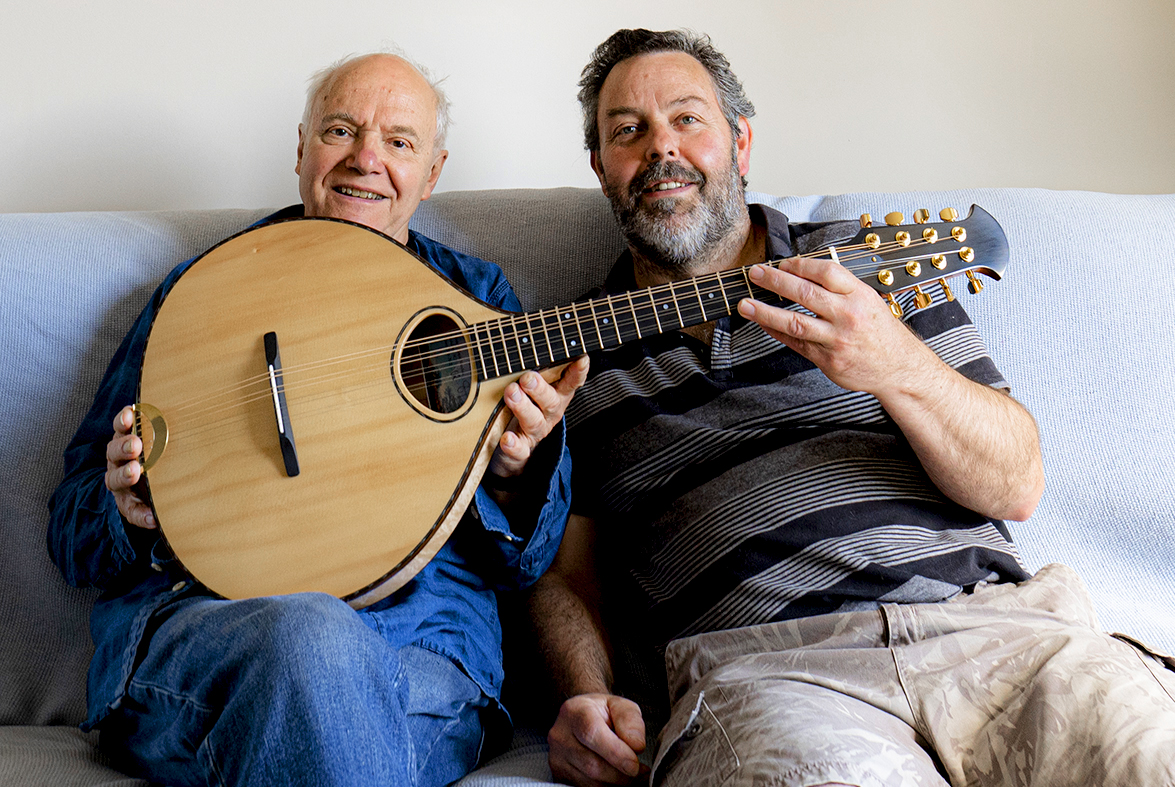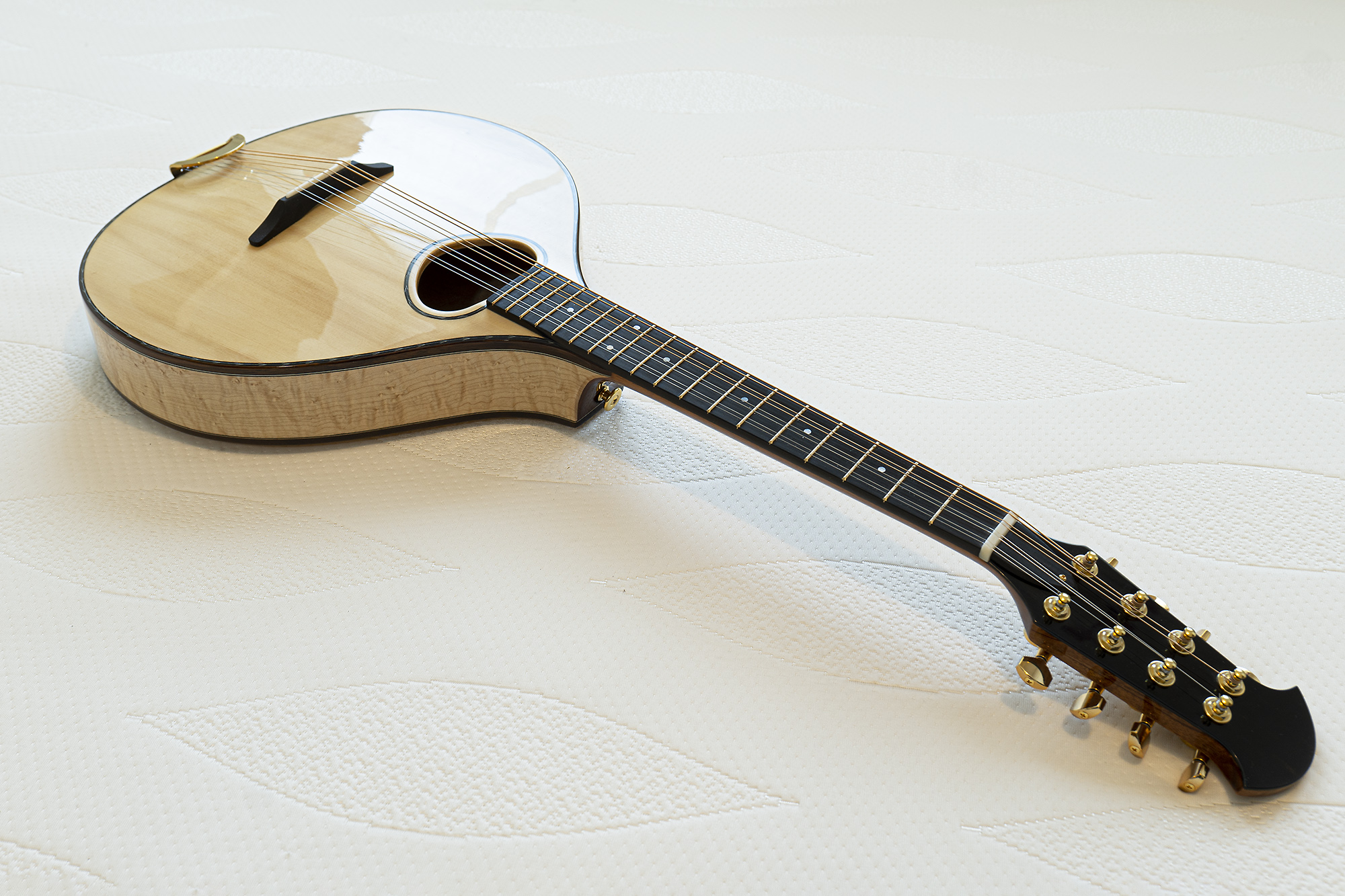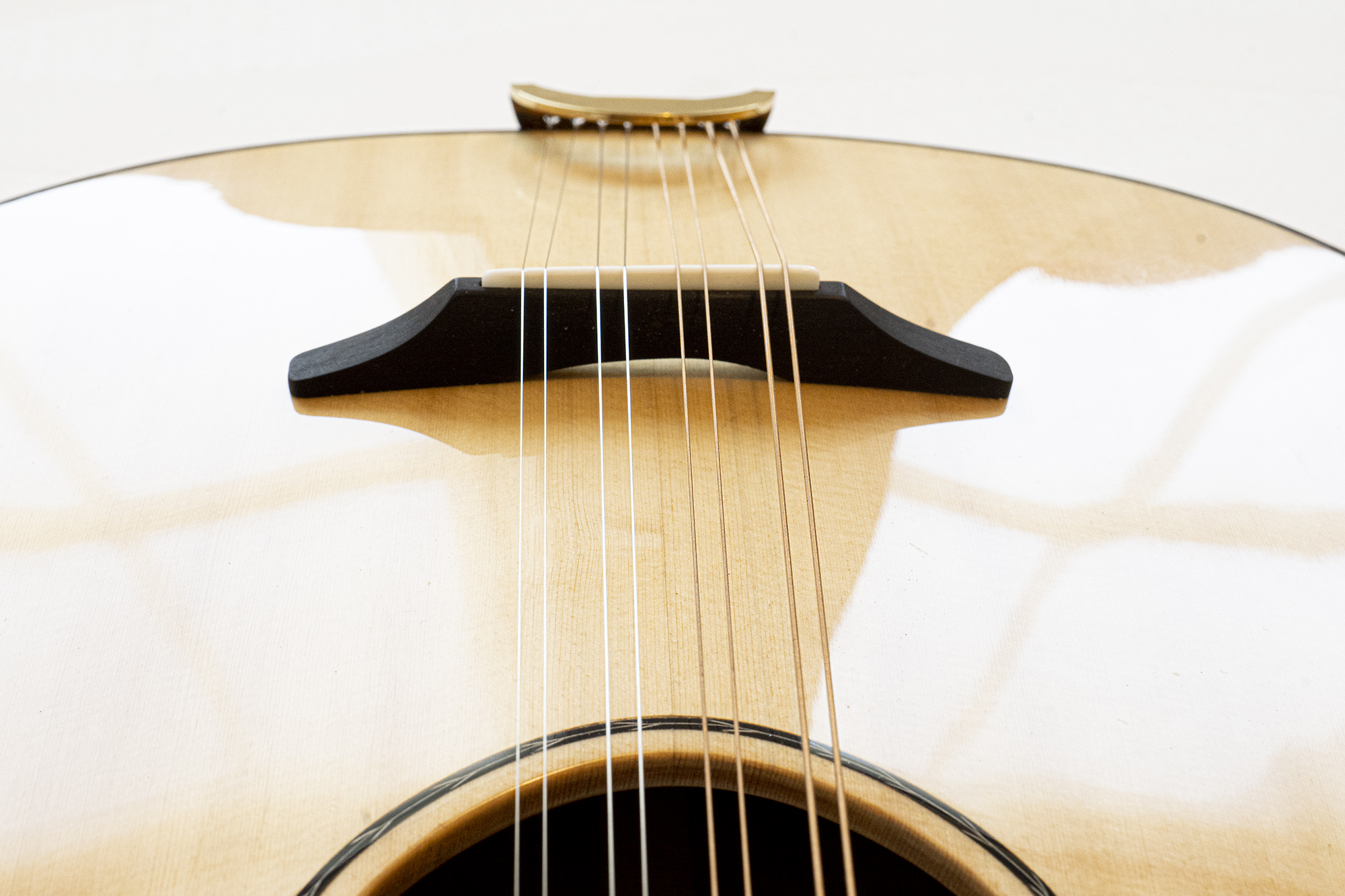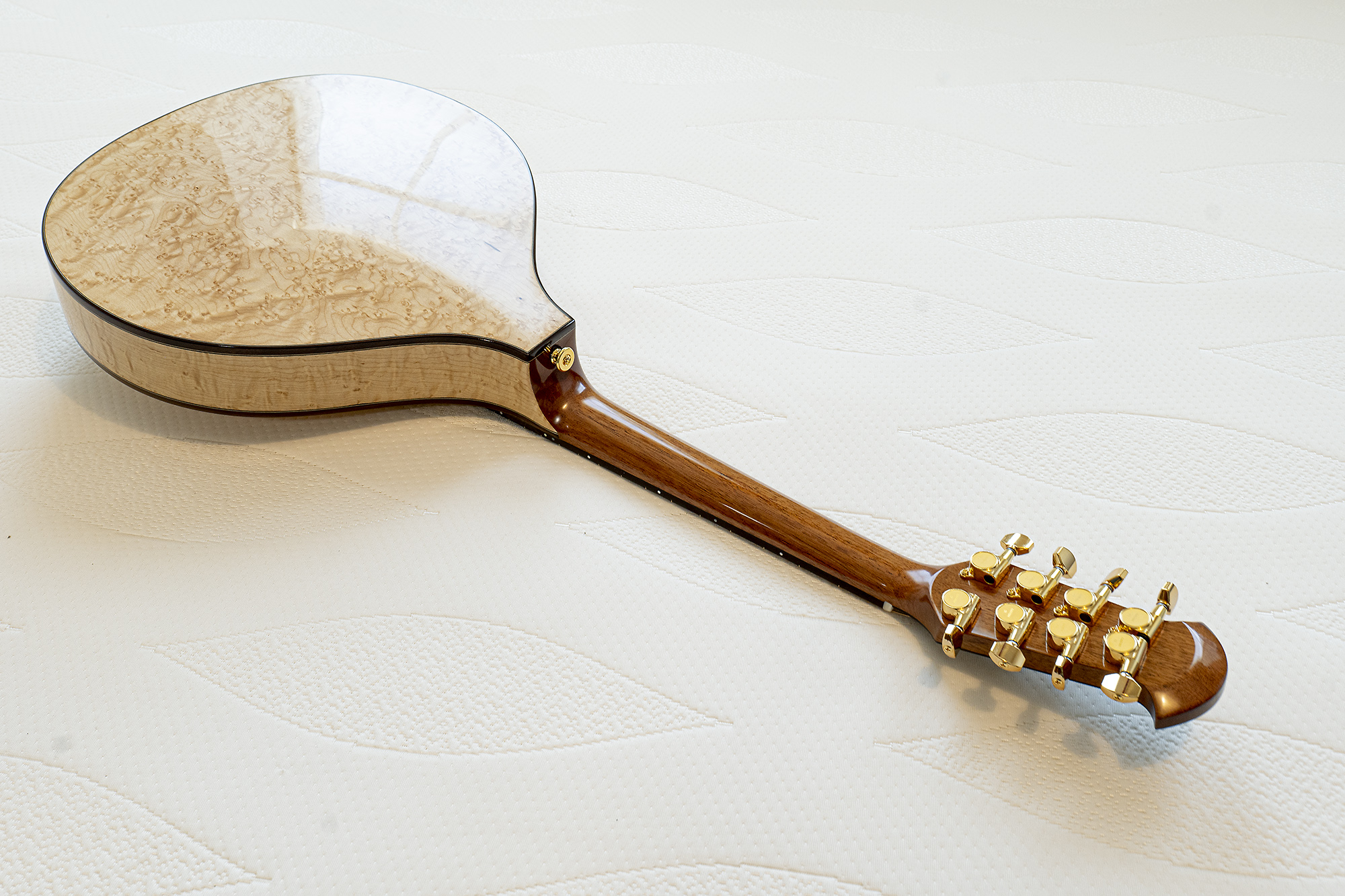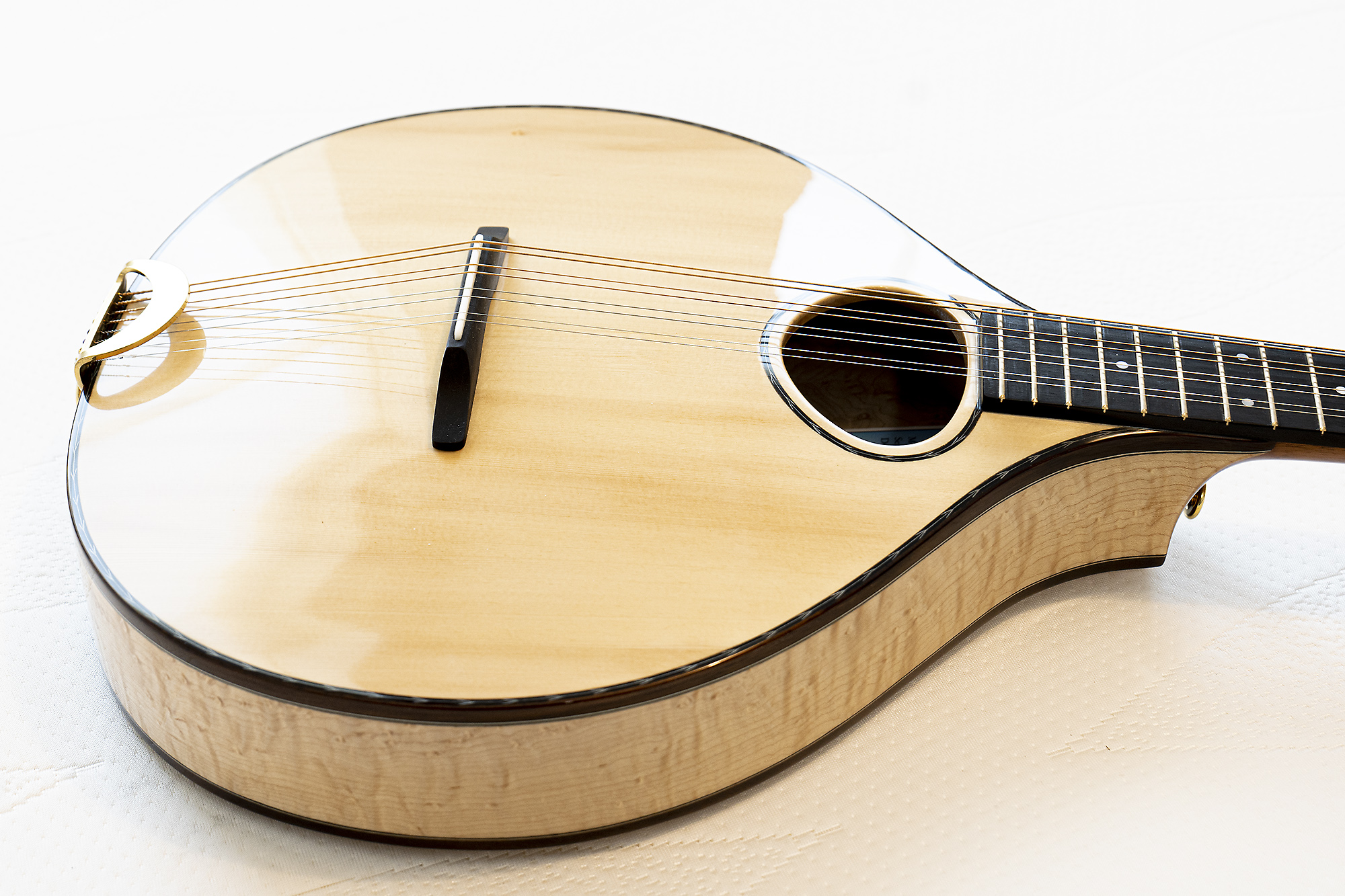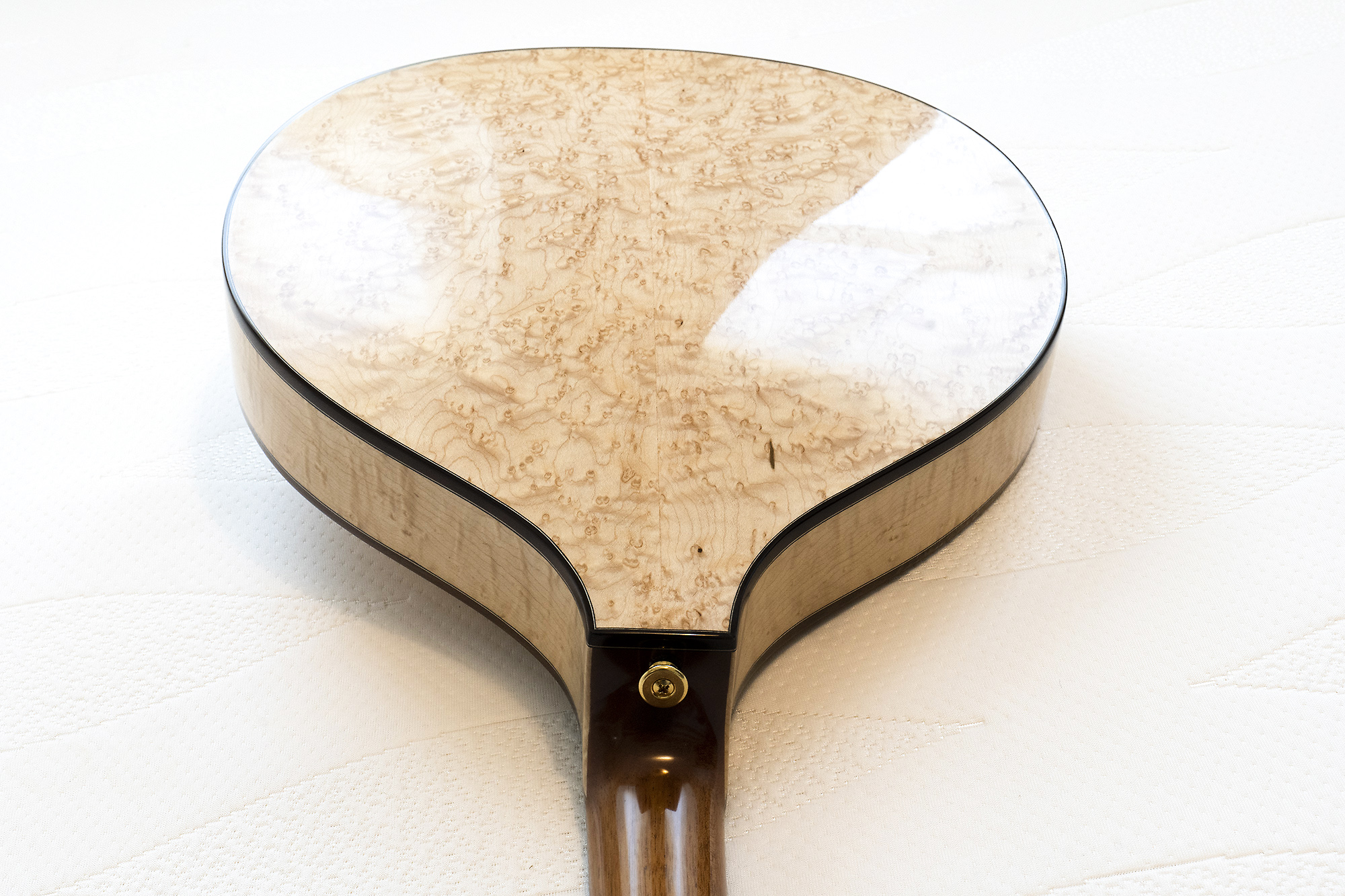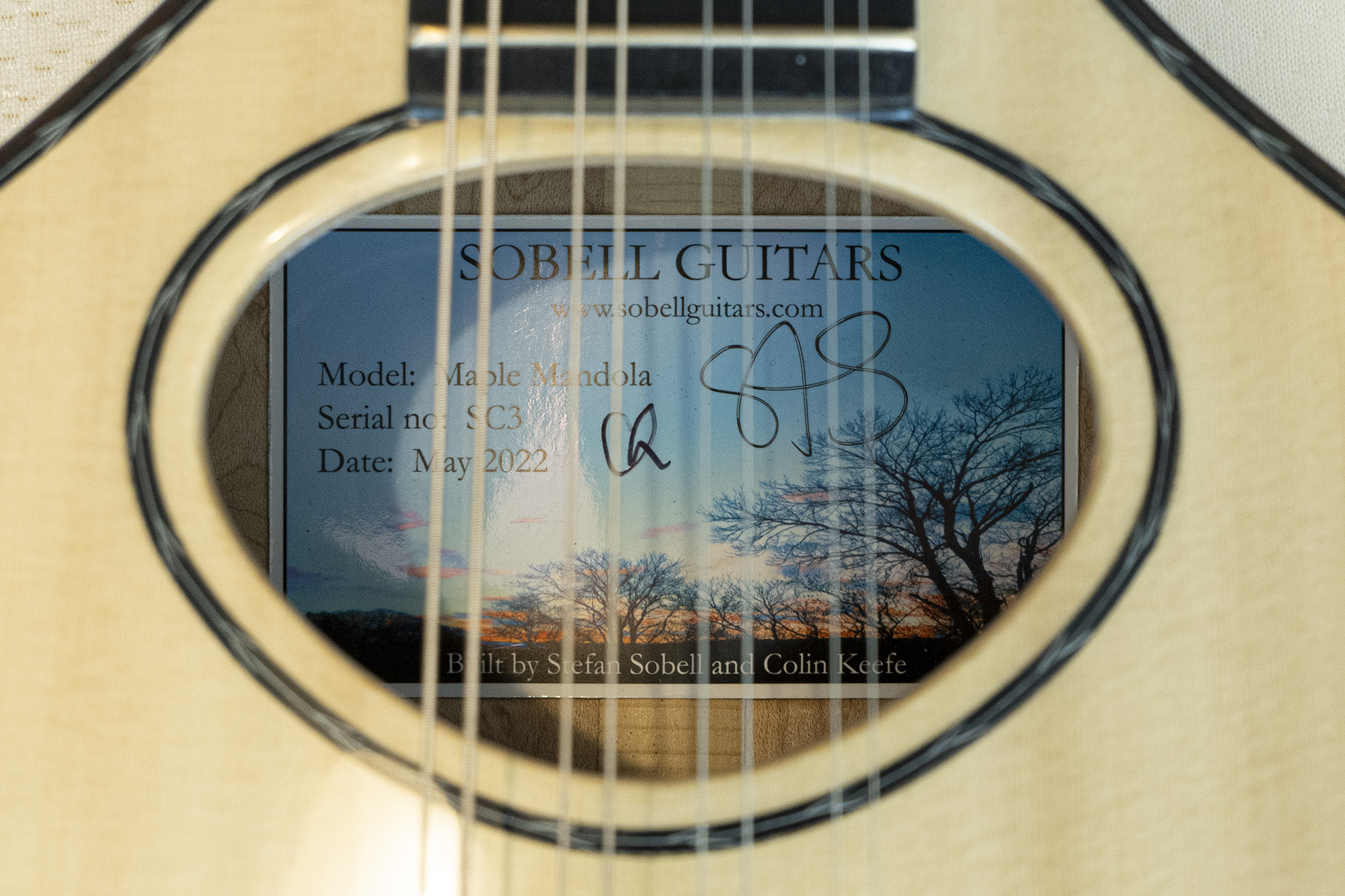Mandolins and Mandola
As of June 2022, we are now building Mandolin family instruments again.
Mandolin: 4 courses tuned GDAE or similar, ” scale, large or small mandolin body.
Mandola: 4 courses tuned CGDA or similar, 20.5″ scale, small OM body
Our new instruments are built to the highest standards using my original designs and the best available materials. They have the same special sound, valued by musicians all over the world for many years.
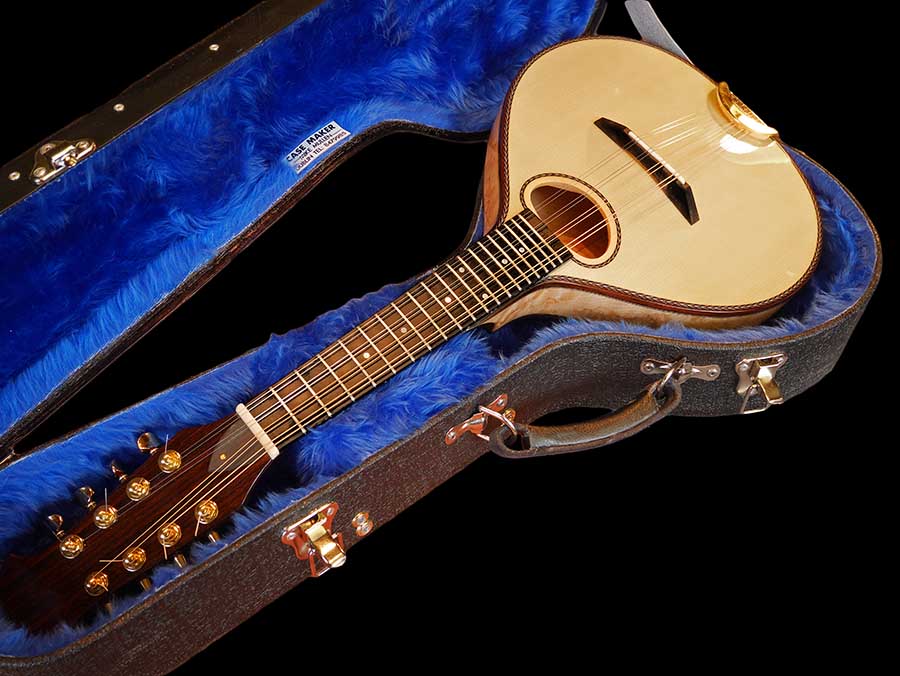
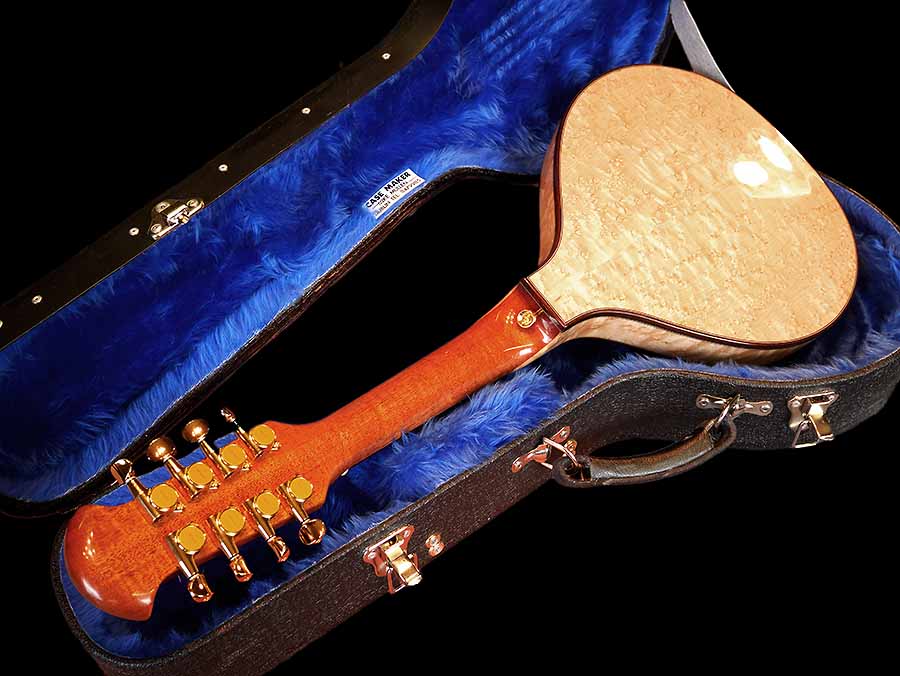
Small bodied mandolin
Large and small mandolins
History
I built my first mandolin in the early 1970s. I based it on the citterns I’d been building for a couple of years; it was really a miniature cittern, with its relatively large body and rosewood back and sides. It was sometimes described as ‘being suitable for Celtic music’, which I disagreed with; I feel it is suitable for many kinds of music.
Over the years I added a smaller bodied model and changed my standard body wood from rosewood to Birdseye maple, with a carved arched back. Not only do I love the look of this wood, it gives a firm resonant sound that is a little closer to traditional mandolin sound, rather than sounding more like a miniature cittern.
We still offer Indian rosewood back and sides (and other woods by arrangement), giving the original cittern sound.
Sound
The two mandolin sizes have a similar sound, with the smaller bodied mandolin having perhaps a stronger treble and the larger bodied a stronger bass; much as you’d expect, really. They are not Bluegrass mandolins, they don’t have the throaty chop that suits Bluegrass so well; they have a smoother sound, clear and full with musical bass and treble, good volume, and just the right amount of sustain.
Mandolin specifications
Soundboard: European spruce.
Back and sides: Birdseye maple (carved back)
Body width: 11.4” small 12.4” large
Length: 27.2” small 28” large
Fingerboard Ebony
Bridge Ebony with bone saddle
Neck: Brazilian mahogany.
Tuners: Gotoh gold minis
Binding: Indian rosewood.
Trim: Herringbone
Tailpiece: Brass
Mandola
The mandola is based on my small bodied cittern body, with a shallower carved back of Birdseye maple. To me it is the perfect combination of body size, scale, pitch, string gauges and pitch.
The sound is clear and firm and also rich, surprisingly so for the body size. It has more sustain than a mandolin and more space for fingers. Celtic tune players may find it doesn’t play in convenient keys (always a fifth lower than fiddle or mandolin), but other instrumentalists and accompanists who have played one have universally loved it. It’s a truly special sound, my personal favourite of all the mandolin family instruments.
The traditional mandola tuning is CGDA but many players now are tuning the top pair down a tone, giving CGDG. Andy Irvine tunes his mandola a tone up from this giving DAEA; this suits the keys he sings in.

